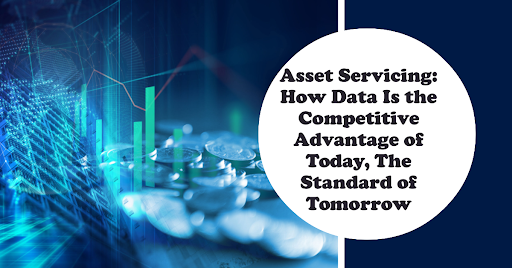The average salary in the United States varies greatly by age, with workers in their 40s and 50s earning the most. According to data from the U.S. Bureau of Labor Statistics, the median annual wage for workers aged 45-54 was $72,228 in 2022. This is significantly higher than the median annual wage for workers aged 25-34, which was $45,763.
There are a number of factors that contribute to the increase in salary with age. First, workers in their 40s and 50s tend to have more experience and education than younger workers. Second, they are more likely to be in management or professional positions, which typically pay higher salaries. Finally, they are more likely to be working full-time, which also contributes to higher earnings.
Of course, there are always exceptions to the rule. Some young workers may earn high salaries if they have specialized skills or are in high-demand industries. And some older workers may see their salaries decline if they are laid off or forced to retire early.
Overall, however, the trend is clear: workers in their 40s and 50s earn more than younger workers. This is likely to continue in the future, as the economy continues to grow and demand for skilled workers increases.
Table of Contents
Gender Pay Gap
It is also important to note that there is a gender pay gap in the United States. In 2022, women earned on average 17% less than men. This gap is even wider for women of color. For example, Black women earn 32% less than white men, and Hispanic women earn 46% less.
The gender pay gap is due to a number of factors, including discrimination, occupational segregation, and the lack of women in leadership positions. It is a serious problem that needs to be addressed.
Education Level
Another factor that affects salary is education level. Workers with a bachelor’s degree earn on average 62% more than workers with a high school diploma. And workers with an advanced degree earn even more.
This is because education is a key determinant of skills and productivity. Workers with higher levels of education are typically more skilled and productive, which allows them to command higher salaries.
Conclusion
The average salary in the United States varies greatly by age, education level, and gender. Workers in their 40s and 50s earn the most, followed by workers with a bachelor’s degree and men. The gender pay gap is a serious problem that needs to be addressed. And education is a key determinant of salary.
What is Employee Monitoring?
Employee monitoring is the practice of tracking and observing employee activity in the workplace. This can be done through a variety of methods, including:
- Computer monitoring: This can include tracking employee keystrokes, website visits, and application usage.
- Internet monitoring: This can include tracking employee email, social media, and instant messaging activity.
- GPS tracking: This can be used to track employee location, especially if they are using a company-owned device.
- Cameras: This can be used to record employee activity in the workplace, such as in break rooms or hallways.
Employee monitoring can be used for a variety of purposes, such as:
- To improve productivity: By tracking employee activity, managers can identify areas where employees are not being productive and take steps to address the issue.
- To protect company assets: Employee monitoring can be used to identify employees who are misusing company resources, such as by downloading unauthorized software or accessing confidential data.
- To comply with regulations: Some industries, such as finance and healthcare, are subject to strict regulations that require companies to monitor employee activity.
- To investigate suspicious activity: Employee monitoring can be used to investigate suspicious activity, such as data breaches or theft.
It is important to note that employee monitoring is not without its risks. If not used carefully, employee monitoring can violate employee privacy and create a hostile work environment. It is important to have clear policies in place regarding employee monitoring and to obtain employee consent before monitoring their activity.
Here are some of the pros and cons of employee monitoring:
Pros of employee monitoring:
- Improved productivity: Employee monitoring can help to identify areas where employees are not being productive and take steps to address the issue. This can lead to significant improvements in productivity.
- Protected company assets: Employee monitoring can help to identify employees who are misusing company resources, such as by downloading unauthorized software or accessing confidential data. This can help to protect the company from financial loss and legal liability.
- Compliance with regulations: Some industries, such as finance and healthcare, are subject to strict regulations that require companies to monitor employee activity. Employee monitoring can help companies to comply with these regulations.
- Investigated suspicious activity: Employee monitoring can be used to investigate suspicious activity, such as data breaches or theft. This can help to protect the company from financial loss and legal liability.
Cons of employee monitoring:
- Violated employee privacy: Employee monitoring can violate employee privacy if it is not done carefully. Employees have a right to privacy in the workplace, and employee monitoring should only be used in a way that is consistent with this right.
- Created a hostile work environment: Employee monitoring can create a hostile work environment if it is used in a way that is perceived as being unfair or discriminatory. Employees should be informed about the company’s monitoring policies and they should have the right to opt out of monitoring if they choose.
- Increased stress levels: Employee monitoring can increase stress levels for employees who feel like they are being constantly watched. This can lead to decreased productivity and increased turnover.
- Costly: Employee monitoring can be expensive to implement and maintain. Companies need to carefully consider the costs and benefits of employee monitoring before implementing it.
Overall, employee monitoring can be a useful tool for companies, but it is important to use it carefully and ethically. Companies should have clear policies in place regarding employee monitoring and they should obtain employee consent before monitoring their activity.





